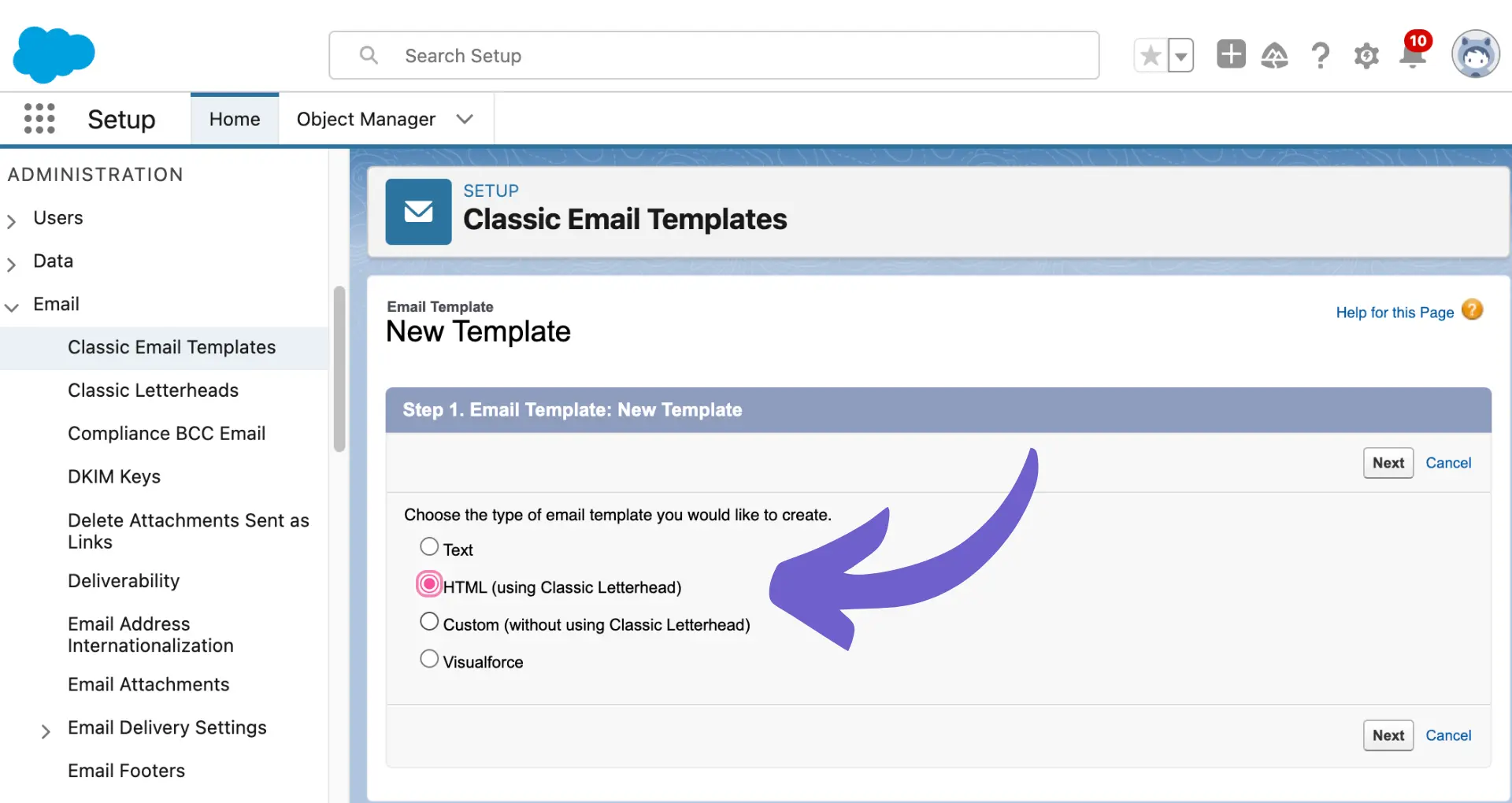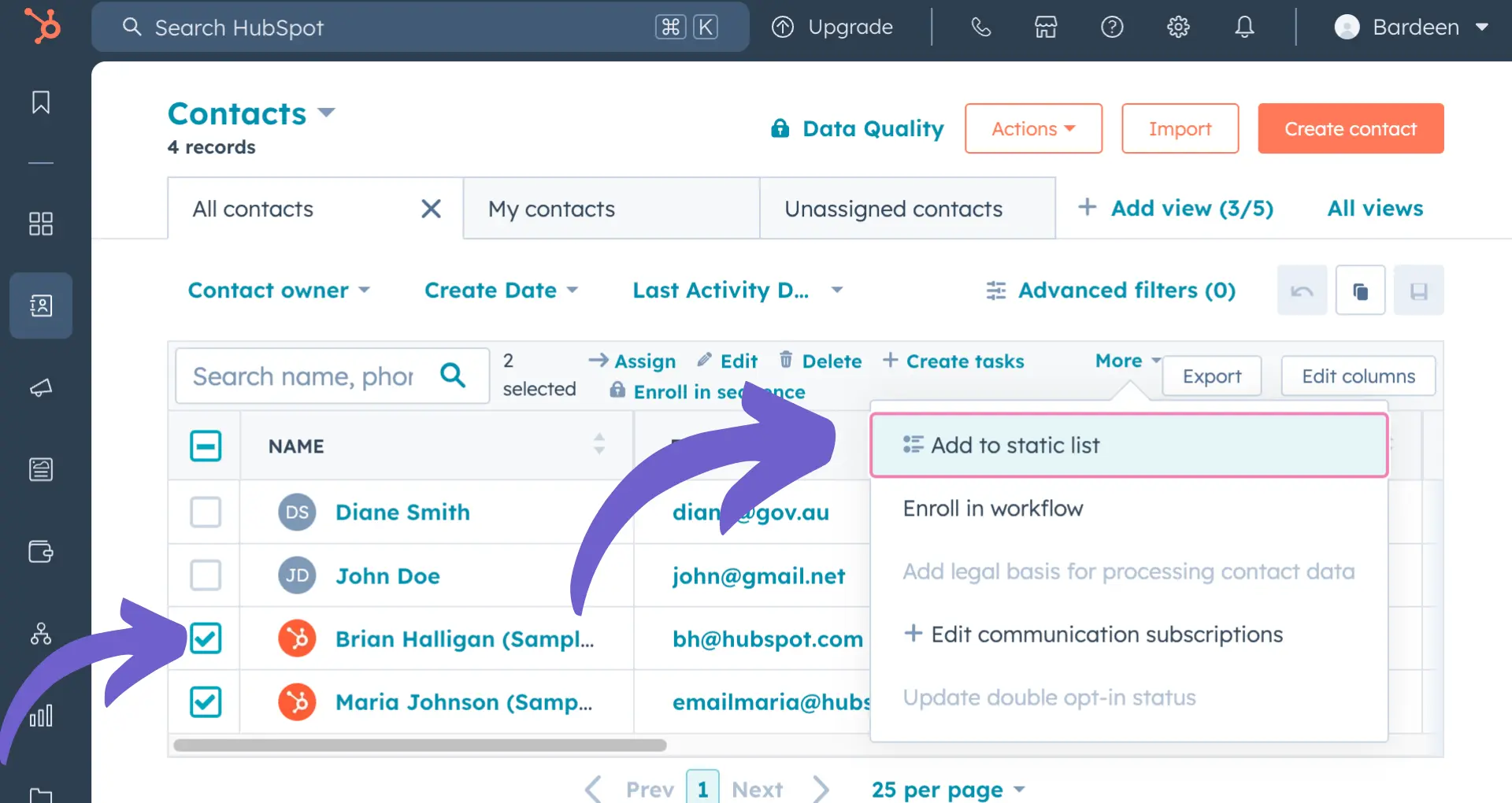





Leverage automation tools to boost your sales performance in 5 steps.
By the way, we're Bardeen, we build a free AI Agent for doing repetitive tasks.
If you're looking to automate sales tasks, check out Bardeen's AI Agent for sales. It can help with prospecting, lead generation, and email outreach, saving you time and improving efficiency.
Sales enablement automation is a game-changer for businesses looking to boost their sales performance. By leveraging automation tools and platforms, companies can equip their sales teams with the resources, insights, and processes they need to close more deals in less time. In fact, according to a recent study, organizations that implement sales enablement automation see an average increase of 13.7% in annual revenue.
But what exactly is sales enablement automation, and how can you master it to drive success for your business? In this comprehensive guide, we'll walk you through the five essential steps to unlocking the full potential of sales enablement automation. From identifying core components and integrating automation into your sales processes to optimizing team performance and measuring impact, you'll gain a deep understanding of how to leverage automation to supercharge your sales efforts.
Not only will we explore the classic manual approaches to sales enablement, but we'll also introduce you to the latest AI-powered tools and techniques that can automate repetitive tasks and free up your team to focus on high-value activities. By the end of this guide, you'll have a clear roadmap for implementing sales enablement automation in your organization and reaping the rewards of increased efficiency, productivity, and revenue growth.
So, are you ready to take your sales game to the next level? Let's dive in and discover how mastering sales enablement automation can help you close more deals, faster than ever before!
Sales enablement automation streamlines and optimizes the sales process, empowering reps to close more deals efficiently. Here are the three core components:
A centralized content management system is crucial for sales enablement automation. It allows sales teams to easily access, organize, and share relevant content, such as product information, case studies, and pricing sheets. By having a single source of truth, reps can quickly find the resources they need to engage prospects and move deals forward.
For example, a rep preparing for a client meeting can quickly pull up the latest product demo video and pricing sheet, ensuring they have the most up-to-date information at their fingertips.
Bardeen can help you automate the organization and retrieval of sales content by copying opportunities, deals, and LinkedIn data to Google Sheets, serving as a centralized repository:
Automating repetitive tasks and workflows saves sales reps valuable time and allows them to focus on revenue-generating activities. Sales enablement automation tools can:
Read more about how to automate sales prospecting and improve efficiency. By automating these tasks, reps can work more efficiently and effectively, ultimately closing more deals in less time.
Bardeen offers several playbooks to streamline sales workflows, such as automating lead creation and qualification in Salesforce and Pipedrive:
Data plays a crucial role in optimizing sales enablement strategies. Automation tools can collect and analyze data from various sources, such as the CRM, marketing automation platform, and sales content management system. These insights help sales leaders:
By leveraging these sales intelligence insights, sales teams can continuously improve their processes and strategies, leading to better results.
Bardeen can help you collect and analyze data to provide valuable insights by enriching your CRM and data management systems with updated and contextual information:
Implementing sales enablement automation with these three core components can significantly boost sales productivity and effectiveness. It provides reps with the right content, tools, and insights to engage prospects and close deals more efficiently.
In the next section, we'll explore how to integrate automation into your sales processes to maximize its impact on your bottom line.
Integrating sales automation tools into your existing sales process is crucial for maximizing efficiency and productivity. By seamlessly incorporating automation at key stages, you can eliminate manual tasks, streamline workflows, and empower your sales team to focus on high-value activities. Here's how to make it happen:
Start by analyzing your current sales process and identifying areas where automation can make a significant impact. Look for repetitive tasks, such as data entry, lead assignment, and follow-up emails, that can be easily automated. For example, if your sales reps spend hours each week manually entering lead information into your CRM, consider implementing a tool that automatically captures and syncs data from web forms and other sources.
Bardeen can help you automate lead qualification and data entry from LinkedIn to your CRM:
By pinpointing these automation opportunities, you can automate sales prospecting and prioritize which tools and integrations to implement first, ensuring a smooth transition and immediate benefits for your team.
Your CRM system serves as the central hub for all customer interactions and data. To fully harness the power of sales automation, it's essential to choose a CRM that offers robust automation features or integrates seamlessly with third-party tools.
Look for a CRM that allows you to automate key processes, such as lead assignment, task creation, and pipeline management. For instance, you can set up rules that automatically route new leads to the appropriate sales rep based on criteria like geography or industry. This ensures that leads are promptly followed up on and no opportunities slip through the cracks.
Bardeen can help you seamlessly transfer data between your CRM platforms:
Once you've identified the right tools and integrations, it's time to put them into action. Start by implementing automation in a phased approach, focusing on one or two key areas at a time. This allows you to test and refine your processes, ensuring a smooth rollout and minimizing disruption to your sales team.
Save time by using lead enrichment and qualification automation from Bardeen. Focus on important tasks without the manual effort.
As you implement automation, be sure to track key metrics and gather feedback from your sales reps. Monitor how automation impacts lead response times, conversion rates, and overall sales performance. Use this data to continuously optimize your automation strategy and make data-driven decisions.
Integrating sales enablement automation into your sales process is a game-changer for your team's efficiency and effectiveness. By automating manual tasks and streamlining workflows, you can free up your sales reps to focus on what they do best - building relationships and closing deals.
Next up, we'll explore how sales prospecting tools can supercharge your team's performance and drive even better results.
Automation is a game-changer for sales teams, allowing them to focus on high-value activities while eliminating time-consuming manual tasks. By implementing the right tools and processes, you can dramatically improve your team's efficiency, morale, and overall performance. Let's explore how automation can take your sales team to the next level:
One of the most significant benefits of sales enablement automation is its ability to streamline workflows and reduce manual tasks. By automating sales prospecting and repetitive processes like data entry, lead assignment, and follow-up emails, your sales reps can focus on building relationships and closing deals.
For example, imagine a sales rep who spends hours each day manually entering lead information into the CRM. By implementing a tool that automatically captures and syncs data from web forms and other sources, you can free up that rep's time to engage with prospects and drive revenue.
Bardeen can help you automate lead generation and data entry, allowing your sales reps to focus more on engaging with prospects and closing deals. Try these playbooks:
To fully leverage the power of automation, it's crucial to provide your sales team with the training and tools they need to succeed. This includes not only teaching them how to use the automation software but also helping them understand how it fits into the overall sales process.
Consider offering regular training sessions, creating detailed documentation, and providing ongoing support to ensure your team is comfortable and confident using the new tools. By investing in your sales reps' skills and knowledge, you'll see a direct impact on their productivity and performance.
Bardeen can help your sales reps practice and refine their outreach techniques, making them more adept at using automation tools in their daily workflows. Try these playbooks:
Nothing motivates a sales team like seeing real-world examples of success. By showcasing sales demo best practices and success stories from other organizations that have implemented sales enablement automation, you can inspire your team to embrace these tools and techniques.
Share stories of how automation has helped sales teams close more deals, respond to leads faster, and exceed their quotas. By highlighting the tangible benefits of automation, you'll create a sense of excitement and momentum that will drive your team to new heights.
Bardeen can help you gather and present success stories and key takeaways from meetings and videos, motivating your team by showing them the real-world benefits of automation in action. Try these playbooks:
Automation is a powerful tool for optimizing your sales team's performance and driving better results. By streamlining workflows, empowering your reps with training and tools, and showcasing real-world success stories, you can create a high-performing sales organization that consistently exceeds expectations.
Next, we'll dive into the key metrics and data you need to measure the impact of automation on your sales process and continually optimize your approach.
Measuring the impact of sales enablement automation is crucial for optimizing your sales process and proving the value of your investments. By tracking key metrics, you can assess the effectiveness of your strategies, identify areas for improvement, and make data-driven decisions to drive better results. Let's explore the essential metrics you should focus on:
Conversion rates are a critical indicator of your sales enablement automation's success. By monitoring the percentage of leads that convert into customers at each stage of the funnel, you can pinpoint bottlenecks and optimize your process accordingly.Automate sales prospecting to improve conversion rates.
Bardeen can help you build a robust prospect list efficiently. Save time and focus on high-quality leads by automating the data collection with Bardeen.
Additionally, tracking the average length of your sales cycle can reveal insights into the efficiency of your automated workflows. If you notice that deals are taking longer to close, it may be time to re-evaluate your automation strategy and identify areas for improvement.
Bardeen can help you automate your sales prospecting and lead qualification processes, allowing you to focus on high-quality leads and streamline your workflows. Try these playbooks:
Sales enablement automation generates a wealth of data that can be used to predict future performance. By analyzing trends in key metrics like deal size, win rates, and revenue growth, you can forecast potential outcomes and adjust your strategies proactively.
For example, if you notice that deals involving a particular product or service tend to have higher win rates, you can focus your automation efforts on promoting that offering to the right prospects at the right time.
Bardeen can help you collect and analyze sales performance data efficiently, allowing you to gain predictive insights and adjust your strategies proactively. Try these playbooks:
While quantitative data is essential, qualitative feedback from your sales team and clients can provide valuable insights into the effectiveness of your automated processes. Regularly surveying your reps and customers can help you identify pain points, gather suggestions for improvement, and ensure that your automation is truly enhancing the sales experience for all involved.
By combining this feedback with your quantitative metrics, you can gain a comprehensive understanding of your sales enablement automation's impact and make informed decisions to optimize your strategies over time. Consider using tools to enrich leads based on feedback.
Bardeen can help you regularly update and enrich your data based on feedback, ensuring your automation remains effective. Try these playbooks:
The key to measuring the impact of sales enablement automation lies in tracking the right metrics, analyzing trends, and gathering feedback from stakeholders. By focusing on conversion rates, sales cycle length, predictive insights, and qualitative input, you can continuously refine your approach and drive better results.
Thanks for sticking with us through this deep dive into sales enablement automation metrics! We hope you're now equipped with the knowledge to measure and optimize your own strategies. Remember, data is your friend – embrace it, and watch your sales soar! 📈🚀
Mastering sales enablement automation is crucial for optimizing your sales process and driving revenue growth. Here's a quick recap of the essential points covered in this guide:
By implementing these strategies, you'll be well on your way to mastering sales enablement automation and reaping the benefits of increased efficiency, productivity, and revenue. Don't let your competitors leave you in the dust – start automating today! 🏃♂️💨










SOC 2 Type II, GDPR and CASA Tier 2 and 3 certified — so you can automate with confidence at any scale.
Bardeen is an automation and workflow platform designed to help GTM teams eliminate manual tasks and streamline processes. It connects and integrates with your favorite tools, enabling you to automate repetitive workflows, manage data across systems, and enhance collaboration.
Bardeen acts as a bridge to enhance and automate workflows. It can reduce your reliance on tools focused on data entry and CRM updating, lead generation and outreach, reporting and analytics, and communication and follow-ups.
Bardeen is ideal for GTM teams across various roles including Sales (SDRs, AEs), Customer Success (CSMs), Revenue Operations, Sales Engineering, and Sales Leadership.
Bardeen integrates broadly with CRMs, communication platforms, lead generation tools, project and task management tools, and customer success tools. These integrations connect workflows and ensure data flows smoothly across systems.
Bardeen supports a wide variety of use cases across different teams, such as:
Sales: Automating lead discovery, enrichment and outreach sequences. Tracking account activity and nurturing target accounts.
Customer Success: Preparing for customer meetings, analyzing engagement metrics, and managing renewals.
Revenue Operations: Monitoring lead status, ensuring data accuracy, and generating detailed activity summaries.
Sales Leadership: Creating competitive analysis reports, monitoring pipeline health, and generating daily/weekly team performance summaries.